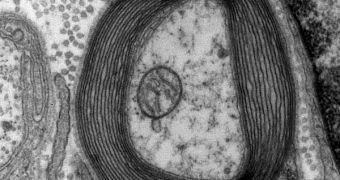Predicting how peripheral nerve axons respond to electrical stimuli is one of the most important aspects of determining if an electrode design is efficient or not. Neural implants need to work in harmony with nerve cells, but finding out whether they do so or not takes weeks at this point.
By using a new computer model developed by investigators at the Case Western Reserve University (CWRU), it is now possible to predict axons' response to stimuli in a matter of seconds, rather than weeks. The finding could potentially help countless people.
The main beneficiaries of technologies stemming from this new capability will be people who are currently suffering from paralysis or amputated limbs. Experts will develop electrodes that are more capable and accurate, and will implant them in the brains of patients.
This will enable the latter to regain at least some of the functionality they lost during accidents or other adverse events. At this point, experts are considering millions of electrode designs, but testing each of them is a time-consuming process.
This is why the new model is so important. Experts could literally take years off the time originally calculated as necessary for producing a viable electrode designs. Details of the work appear in the latest online issue of the Journal of Neural Engineering.
“We believe this will allow the next generation of computer-aided development of electrodes,” senior paper author Dustin Tyler explains. He holds an appointment as an associate professor of biomedical engineering at the CWRU School of Engineering.
“Finding the optimal way to stimulate a nerve is kind of like the ‘traveling salesman’ trying to figure out which is the most efficient route through a group of cities,” the investigator goes on to say.
The expert and his team developed a very complex mathematical formula to determine all possible routes electrical signals could take, as well as the amount of time they would spend “on the road.”
In the past, experts tried to conduct similar investigations, but they took fewer elements into account, and also wanted to explain everything with a single equation. These limitations prevented those studies from reaching any significant result.
The new CWRU model is designed specifically for peripheral motor nerve axons, but investigators say that it could be possible to extend the simulation to other type of nerve cells as well. The team relied on Yale University' NEURON free online nerve simulation environment for the study.

 14 DAY TRIAL //
14 DAY TRIAL //